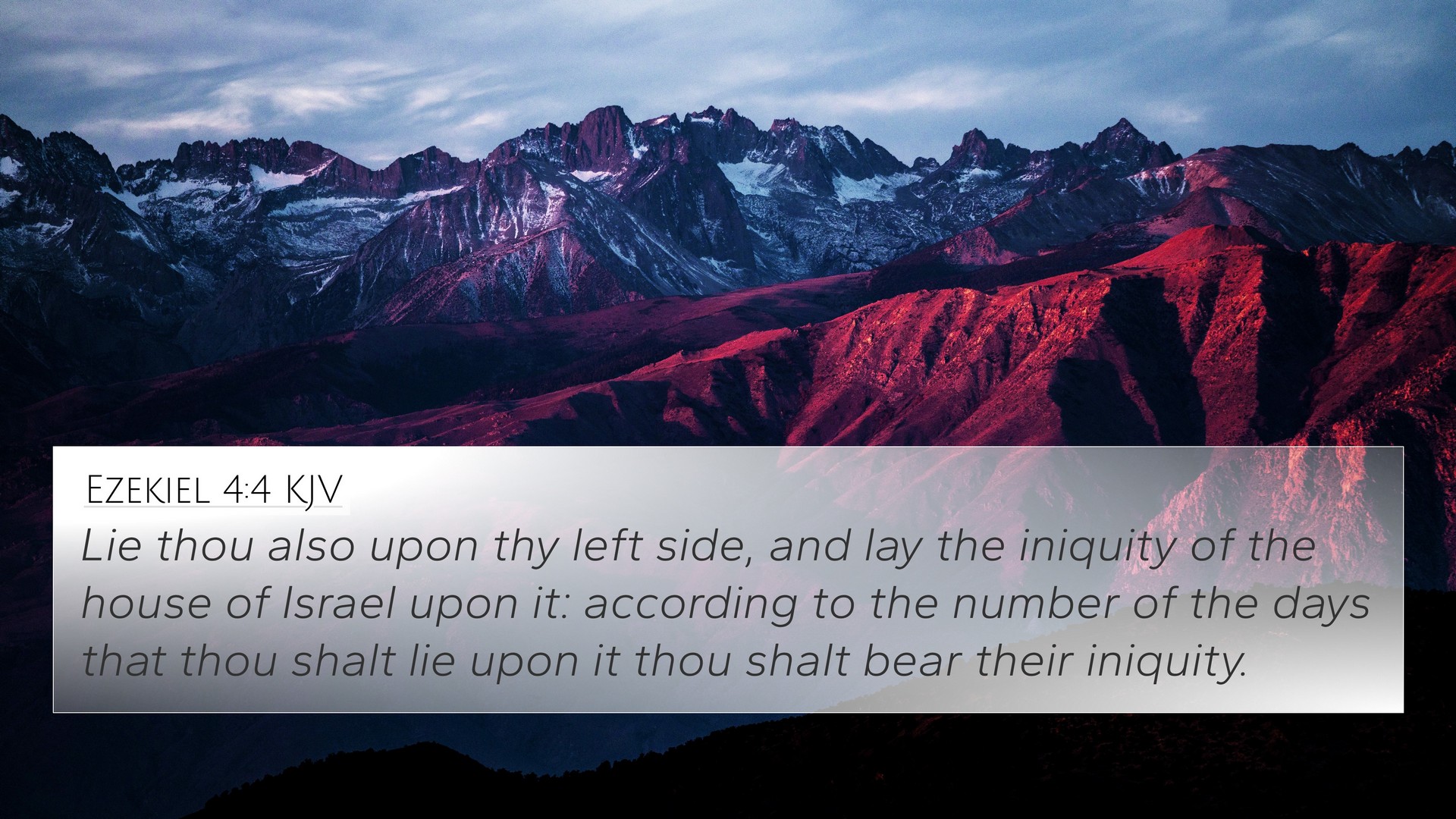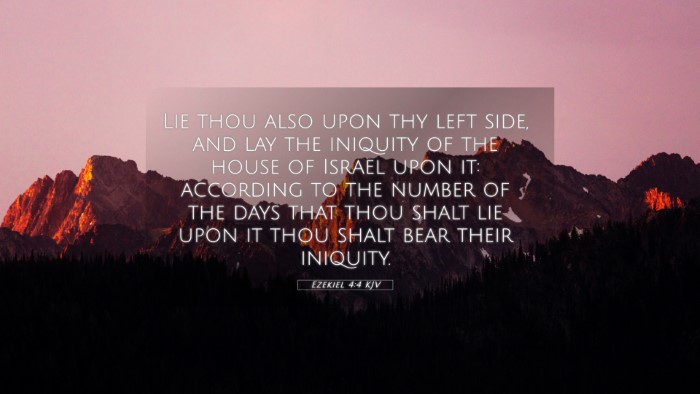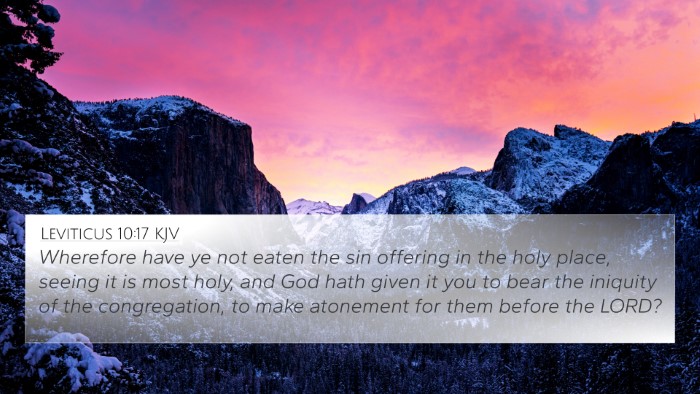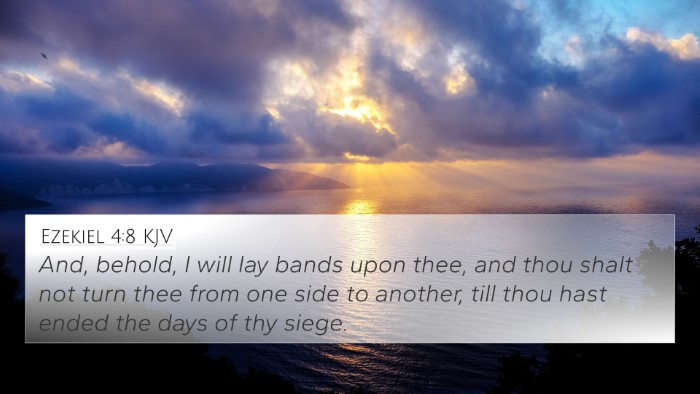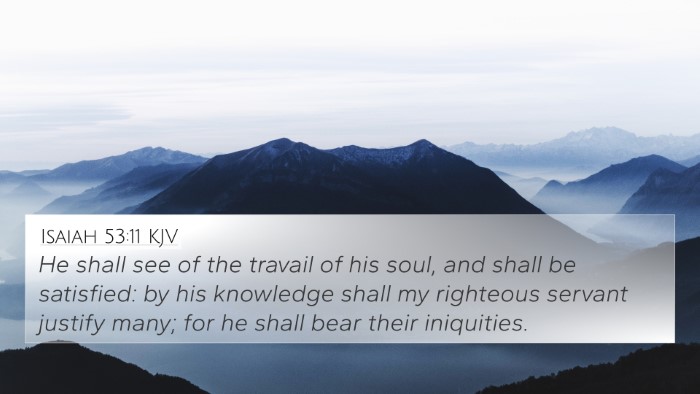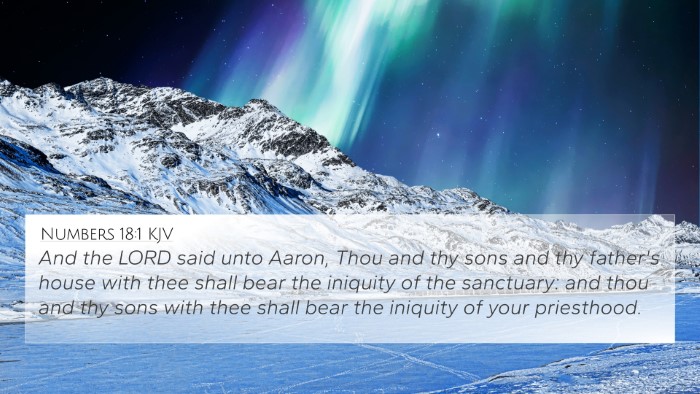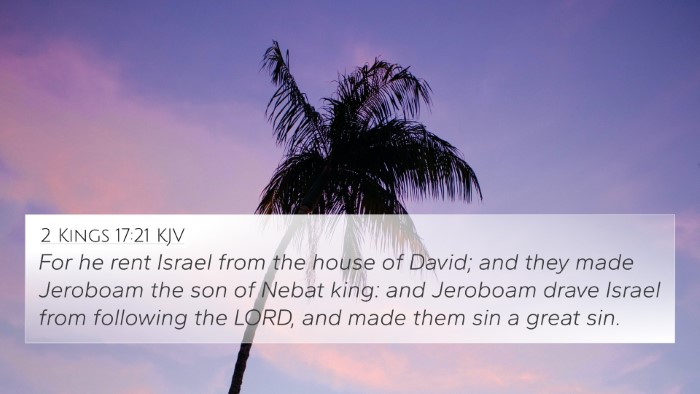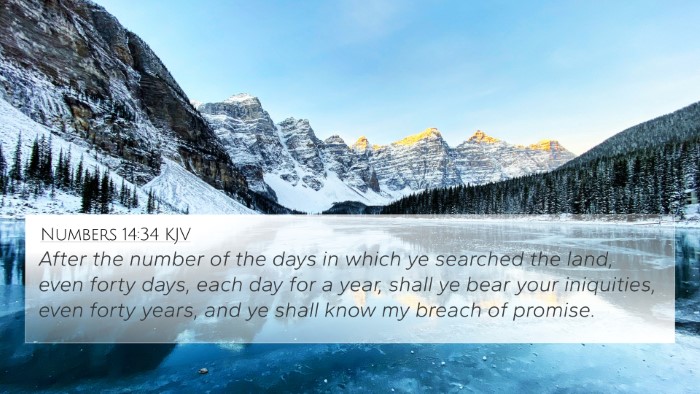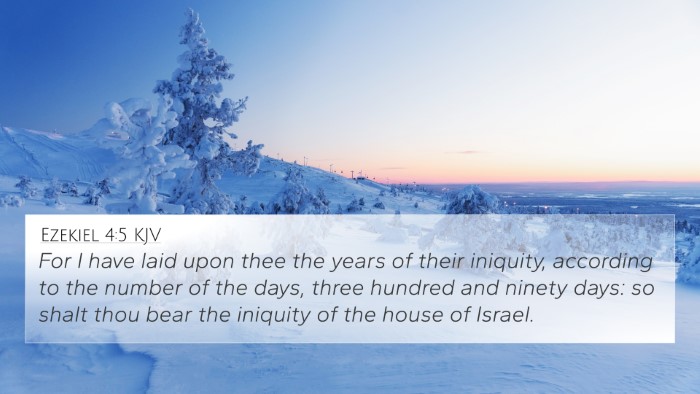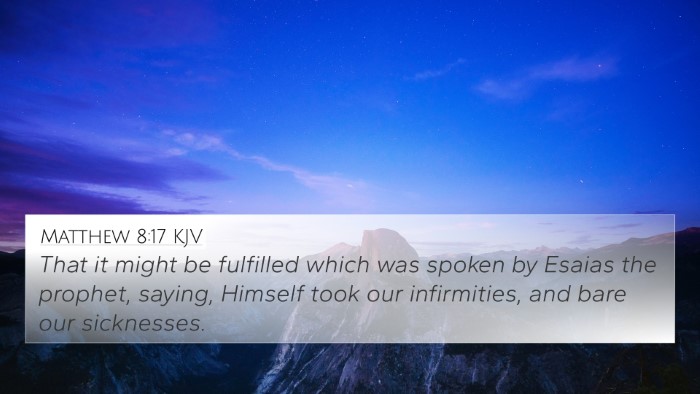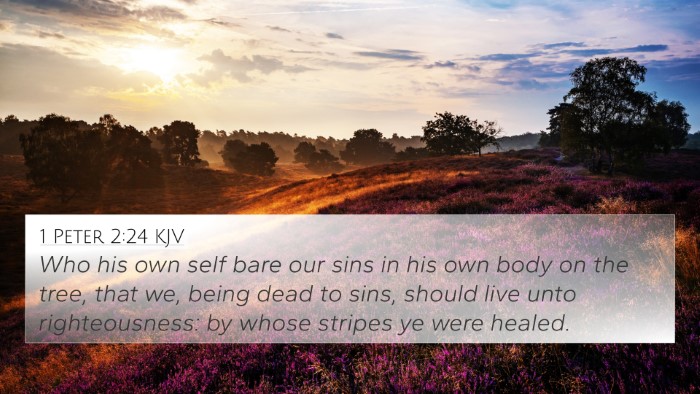Ezekiel 4:4 - Summary and Analysis
Ezekiel 4:4 states: "And you, son of man, take for yourself a clay tablet, and lay it before you, and portray on it the city, Jerusalem." This verse serves as a directive to the prophet Ezekiel, symbolizing the impending siege and destruction that would come upon Jerusalem due to the people’s transgressions.
Meaning and Context
The command given to Ezekiel is significant for several reasons. It highlights the prophetic act, which serves as a visual representation of God's message. Using a clay tablet, Ezekiel’s actions are designed to convey a powerful message to the people of Israel about their rebellion and the consequences that would follow.
Insights from Public Domain Commentaries
- Matthew Henry: Henry emphasizes the symbolism behind Ezekiel's actions. The clay tablet represents the inscribing of Israel's sins, reflecting God's displeasure and the certainty of the forthcoming judgment. Ezekiel's role is not just as a prophet, but as an artist illustrating the divine warning.
- Albert Barnes: Barnes points out that the act serves as a physical manifestation of the spiritual reality. The tablet symbolizes the record of sin and judgment written against Jerusalem. This also serves to prepare the hearts of the people, allowing them to recognize the seriousness of their situation.
- Adam Clarke: Clarke adds that the act is also a foreshadowing of the eventual desolation that would befall Jerusalem. By laying the city out on a tablet, Ezekiel effectively proclaims the siege, inviting reflection and lamentation upon the state of Jerusalem.
Thematic Connections
Ezekiel 4:4 can be linked to several key themes throughout the Bible, forming connections that deepen our understanding of God's judgment and the importance of prophecy. Here are some relevant themes and connections:
- Judgment and Prophecy: The verse conveys God's judgment, which resonates with Isaiah 1:20 ("But if you refuse and rebel, you shall be eaten by the sword; for the mouth of the Lord has spoken.") This connection highlights the consequences of rebellion against God.
- Visual Prophecy: Similar to how Ezekiel uses a clay tablet, other prophets used object lessons. For instance, Jeremiah 13:1-10 describes the use of a linen belt to symbolize the fate of Judah.
- Divine Communication: The use of symbolic actions in Ezekiel is echoed in Hosea 1:2, where Hosea's own life becomes a living metaphor for Israel's unfaithfulness.
- Desolation of Jerusalem: This prophecy aligns with the future event of destruction mentioned in Lamentations 1:8 ("Jerusalem sinneth grievously, therefore she is removed: all that honored her despise her, because they have seen her nakedness: yea, she sigheth, and turneth backward.").
- Clay as a Symbol: The material used by Ezekiel is notable. Clay is a recurring biblical metaphor for humanity’s fragility, as seen in Isaiah 64:8 ("But now, O Lord, thou art our father; we are the clay, and thou our potter; and we all are the work of thy hand.").
- The Call to Repentance: The prophetic warning is an appeal for repentance, relating to 2 Chronicles 7:14 ("If my people, which are called by my name, shall humble themselves, and pray, and seek my face...").
- National Identity: The portrayal of Jerusalem in Ezekiel 4:4 brings forth themes of national identity and faithfulness found in Psalms 137:5-6, where the exiles recall Jerusalem.
- Suffering and Endurance: In the light of prophesied suffering, parallels to Romans 5:3-5 ("And not only so, but we glory in tribulations also: knowing that tribulation worketh patience;") offer reflections on the purpose behind such prophetic acts.
- Representation of God’s People: As Jerusalem is portrayed in distress, it resonates with the imagery depicted in Revelation 11:8 about the spiritual condition of God's people symbolized in various ways.
Bible Cross-References Related to Ezekiel 4:4
- Isaiah 1:20 - Eternal consequences for disobedience.
- Jeremiah 13:1-10 - Use of objects as prophetic symbols.
- Hosea 1:2 - Life as a metaphor for Israel’s unfaithfulness.
- Lamentations 1:8 - Jerusalem's downfall and its reasons.
- Isaiah 64:8 - Humanity as clay in God’s hands.
- 2 Chronicles 7:14 - The call to seek God for healing.
- Psalms 137:5-6 - The longing for Jerusalem in exile.
- Romans 5:3-5 - Understanding tribulation in a faithful context.
- Revelation 11:8 - Symbolism related to God’s people.
Conclusion
In summary, Ezekiel 4:4 is a profound demonstration of God's communication and the seriousness of sin. Through the admonitions and prophetic symbols presented by Ezekiel, readers are invited to reflect on their relationship with God and to recognize the gravity of divine judgment.
